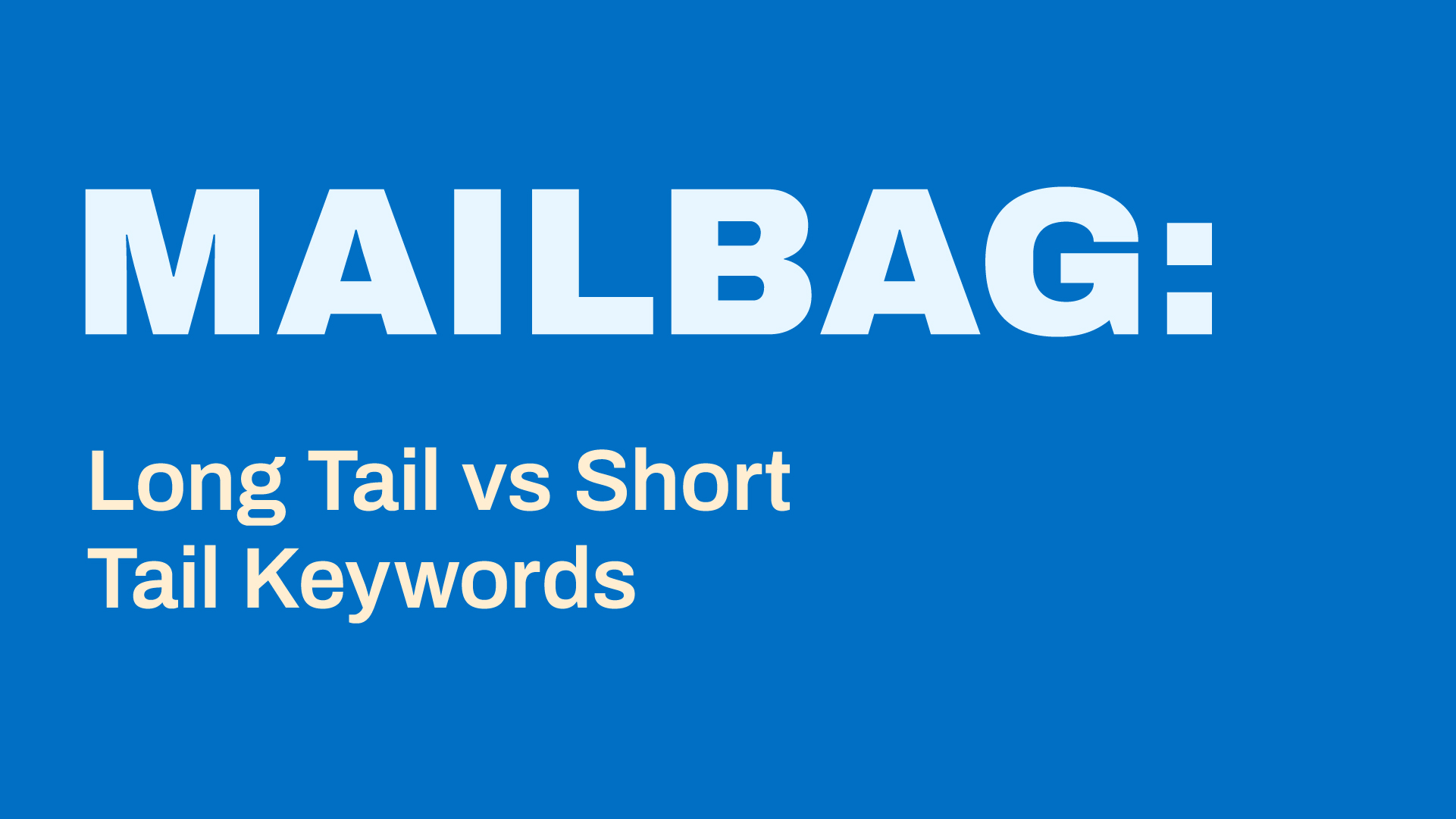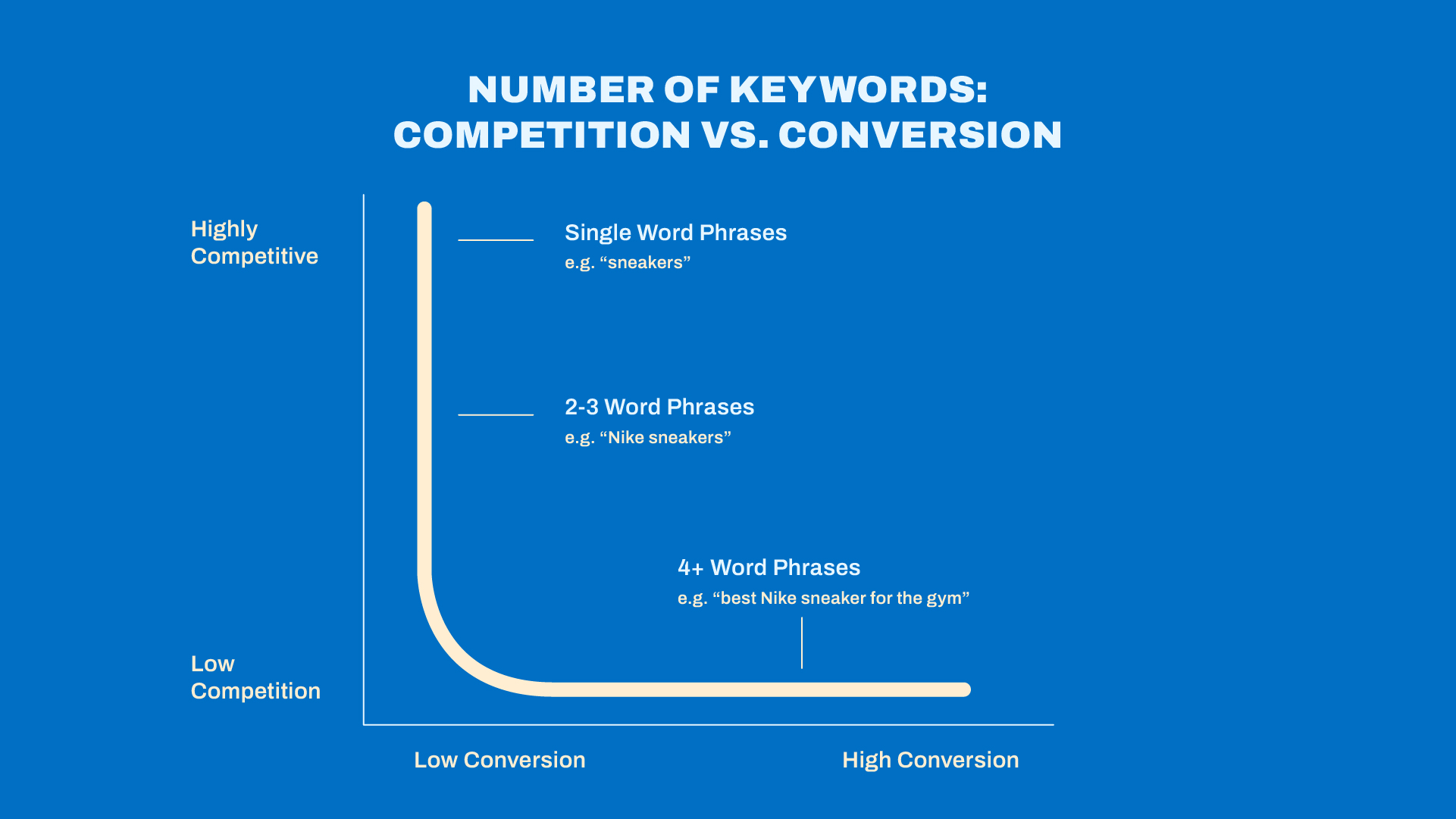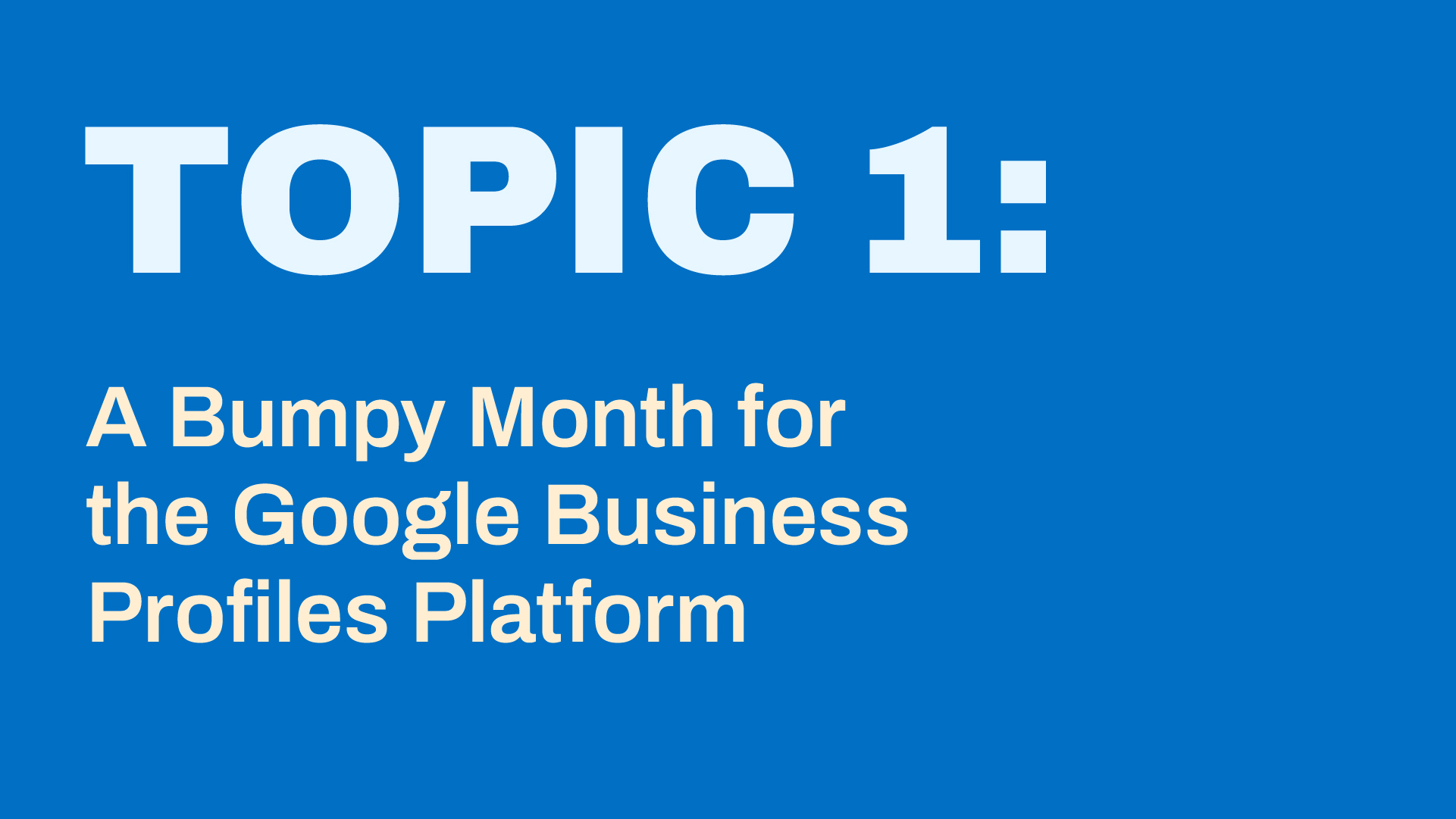Howdy Folks, I’m Dan O, Senior Search Strategist here at Overit Media, and this is the Overit SEO Brief. This Brief is for Q1 2025, where we’ll cover some news and updates on the Local SEO front, as well as discuss some new content trends at the intersection of Search and AI.
As always, if you like what you see be sure to sign up for updates or follow us on our social channels. Alright, let’s get started!
In some Local SEO news, the Google Business Profile platform recently experienced some hiccups. Right around Valentine’s Day, Google Business Profiles, or GBPs, experienced bugs in the Review Count system for a range of organizations.
After users reported drops in their total number of Reviews, Google reps confirmed that there was indeed a bug, but clarified that it was impacting the displayed review count alone and that no actual reviews were deleted from the system. They confirmed a fix for the bug and communicated that for some impacted profile listings, it might take a few days for the review counts to return to normal.
A few days after that, some users found themselves unable to access their GBP management pages at all, including popular SEO writer Barry Schwartz, who reported on it on social media and the Search Engine Roundable website. Impacted users were presented with a mix of error messaging including 500 level timeouts. The issue was later resolved, but some users reported outages that lasted up to several hours.
Schwartz also later shared some communications with Google reps that confirmed that Google is currently dealing with a backlog for GBP support, and that users might experience delays for issues like video verification, reinstatement of suspended profiles and technical support.
GBPs have grown over the years from a quirky feature added to Google Maps to a critical marketing platform for millions of businesses. For local businesses in particular, visibility through Google Maps are just as critical for success than traditional organic results. But just as GBPs have reached peak importance, the cracks are starting to show a little in the platform.
Frankly, Google’s got a lot going on with their search engine, YouTube, Chrome and Android ecosystems, their recent pushes into AI, and let’s not forget multiple lawsuits and trials from the federal justice department. There’s only so much support and development they can spread around.
It’s still a great product for local businesses and it’s entirely free, but if you’re a local business that has a GBP listing, be sure to check it regularly for consistency and accuracy and log into the manager page for important updates and changes to the platform as well.

Now we turn to some emerging content trends for Google’s AI Overviews, particularly when it comes to multimedia. If you’re not already familiar, AI Overviews are a new feature in search results that leverage AI overview summaries for certain search queries, including those with citations or links from the web.
As Google has rolled these more, the responses to them have been somewhat mixed, but users have also gotten used to them rather quickly. And Google just recently announced we can expect to see even more of them after integrating them into their Google Lens product.
Google Lens is a camera powered search tool that lets users take a picture of something in the real world and search Google’s staggering image collection for images like it. With over 20 billion Lens searches a month, the product was already immensely popular, but in some ways limited to just a database of existing images indexed from the web.
But now, according to the Google blog post announcing this,
“with help from our advanced AI models, Lens can go much further and provide information on the contents of more novel or unique images. For those kinds of queries, AI Overviews will begin to appear more often in your Lens results, with no need to add a question to your visual search.”
In a related trend, recent data published by the SEO platform Bright Edge shows a 25% overall increase in the share of AI Overviews that include a citation or link to a YouTube video. The 25% lift is an average across a range of verticals, with some showing much greater increases in YouTube citations than others. The biggest lifts were seen in healthcare and eCommerce, with the lowest levels in the insurance and educational spaces.
We can expect Google to tinker with AI Overviews vertical by vertical, but this is a great reminder to start thinking of your content strategy more holistically, particularly in regard to multimedia formats. Even though it’s 2025, a lot of conversation around content strategies still place an emphasis around text-based content and the written word.
But if I’m searching for an answer to a very specific question, Google might find that answer 23 minutes into a specific episode of a podcast, and their new Indexation technologies lets them send me right to that timestamp for audio-based content. We’ve just discussed the growth of image and video-based search results. And then consider interactivity and immersive content. Anything from quizzes to calculators, widgets to apps, even augmented or virtual realities.
The number of searches where static, text-based content comes back as the top result is steadily going to shrink, replaced with more multi-sensory and immersive content formats. Make sure your content strategies and discussions around digital content for your organization reflects these emerging trends. And if you need any advice or assistance with your content strategy, you can always contact us here at Overit.

And to close things out, we’ll take a quick question from our Mailbag. This question comes from Thomas in Rhinebeck, who asks: “What’s the difference between short tail and long tail keywords, and which ones are better?”.
That’s actually a great question, one I don’t get asked as much lately, but is still such a foundational SEO topic. Exact definitions vary, but when we talk about short tail vs long tail keywords, we’re generally distinguishing between types of keyword searches based on a few recurring characteristics, particularly their length, search volumes, competition levels, and user intents.
A short tail keyword tends to use fewer words and shorter phrases, like “sneakers” or “Nike sneakers”. These are quite broad, but there’s also a lot of monthly search volume for them: thousands or millions of searches a month.

Because they’re briefer in word count, there’s only a few variations. They are very competitive to rank for, and the demonstrated user intent is somewhat broad or upper funnel. It’s a lot of lookers, but not necessarily shoppers. The value of ranking for these keywords is the sheer quantity of searches every month. Conversion rates are low, but you can make up for it on volume.
By comparison, mid tail or long tail keywords are longer searches, with more words in them, like “best Nike sneakers for the gym”. These searches reflect a more specific user intent than a short tail keyword. The number of people searching for a long tail keyword is fewer than a short tail one. Instead of thousands or millions of searches a month, it might be only a few dozen monthly. But because there’s more words in these longer queries, there’s a greater range and variety of them. A vertical like sneakers might have only 10 keywords that see over a million searches a month, but there’s a million keywords in that same vertical that see at least 10 searches a month.
And those keywords are less competitive and reflect more specific and qualified user intents. These aren’t just lookers; these are often in-market shoppers. So, the value of these keywords is that they’re easier to rank for, there’s a greater range of them. You don’t need the sheer volume of a short tail keyword because the conversion rates are higher.
Now, neither of these are necessarily better than the other, and you really should optimize your website up and down the funnel for relevant short, mid and long tail keywords. But your content strategies should reflect an understanding of mid to long tail keywords, particularly if you’re starting out or a smaller business or organization.
It’s very difficult for most websites to rank for short tail keywords. The competition levels are fierce, and you’ll just find yourself buried in the search results. Longer tail keywords give you a greater chance of ranking visibility, something to plant your flag on, find a niche in where you have the most success, and grow from there. Then, over time, you can better compete for those more sought after, super-high volume short tail keywords as well.
We hope that helps.
Well, that’s it for this Brief. Thanks for watching and we’ll see you next Quarter. Bye folks!
